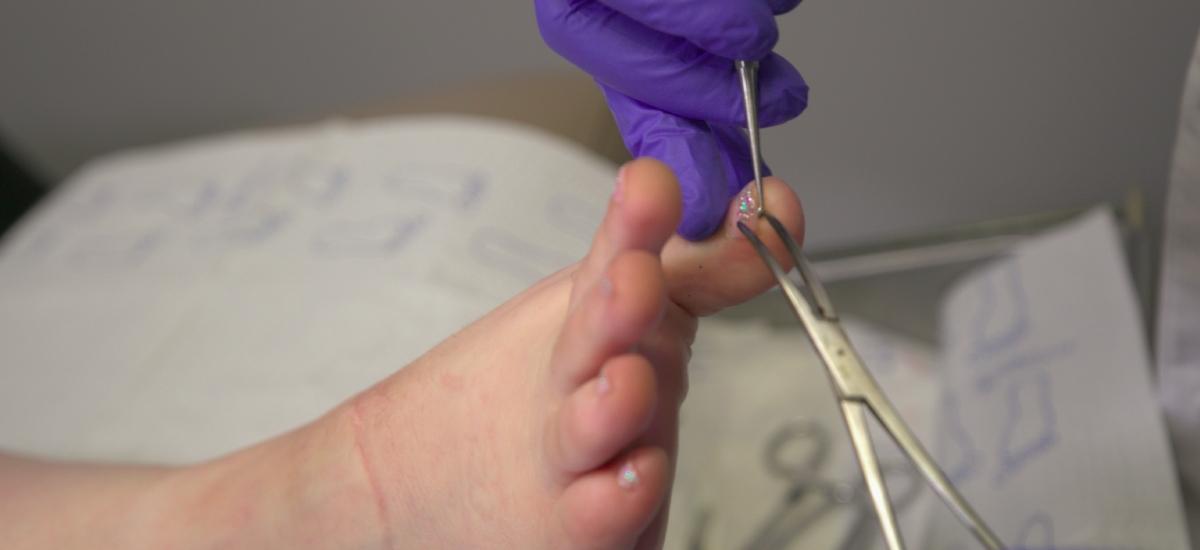
In the world of medicine, there are a number of problems that we face on a daily basis, and one of the most common is an ingrown toenail. This seemingly small ailment can turn into a source of discomfort and pain, severely limiting normal daily activities. However, modern medicine offers effective methods of solving this problem, offering a number of innovative techniques:
- Surgical resection
- Chemical removal
- Laser correction
A visit to a podiatrist is necessary to determine which method of ingrown toenail removal is appropriate in a particular case. The Illinois Foot & Ankle Clinic is ready to help all patients facing this problem. The clinic's talented podiatry surgeon, Alex Yanovskiy, is one of the leading specialists in this field and will find an individualized solution to ingrown toenail removal for each patient.
When Is Ingrown Toenail Removal Recommended?
Removal of an ingrown toenail may be due to a number of factors.
- Recurrent infections: if the ingrown nail plate becomes a source of persistent infections that do not respond to conservative treatment.
- Constant pain and discomfort when walking.
- Deep penetration of the nail plate into the surrounding tissues of the toe, causing inflammation or deformity.
- Ineffective conservative treatment: when conservative treatments for an ingrown toenail, such as the use of antiseptics, bandages or special offloading devices, fail to produce the desired results.
- Damage to the nail: which leads to its ingrown growth or deformity.
In any case, the decision to remove an ingrown toenail should be made by a doctor based on the individual characteristics and health status of the patient, as well as after a thorough evaluation of the benefits and risks of the procedure.
Preparation for Surgery
Ingrown toenail surgery is a same-day outpatient procedure that requires no special preparation. It is usually performed on the day of the initial consultation. In some cases, if there is a history of complications, the surgeon may refer the patient for additional tests - urine and blood tests to assess the patient's overall condition. If the ingrown toenail on the foot of a newborn or teenager, the doctor preliminarily conducts allergy tests to ensure that the patient is not allergic to drugs for anesthesia.
The Ingrown Toenail Removal Procedure
The choice of treatment method depends on the severity of the pathological process, the presence of inflammation and individual characteristics. It is important to consult a doctor, a specialist in ingrown toenail, to determine the best approach to treatment. This can be:
- Chemical removal: the use of special concentrated solutions to gradually destroy the ingrown nail. This method requires precise exposure to the pathologic neoplasm.
- Laser removal: This method is fast and effective. A laser beam is used to remove the ingrown nail plate by "vaporizing" it with a simultaneous disinfection of the correction area, which prevents the development of fungal and infectious pathologies. Laser removal may be preferred by patients as it is more precise and less painful than other methods.
- Surgical resection - removal of part of the nail plate: does not require general anesthesia, used if there are signs of suppuration or soft tissue overgrowth around the nail plate. To exclude bleeding during the operation, a rubber tourniquet is applied to the toe. The essence of the operation is the marginal resection of the ingrown part of the nail plate together with the growth zone. This prevents the risk of recurrence and re- ingrowth of the nail. After the procedure, recommendations are given to the patient on further care. A date is set for a follow-up examination.
Recovery and Aftercare
Recovery from ingrown toenail surgery plays an important role in preventing recurrence and allowing healing to take place.
Recommendations:
- Do soaking the wound for 3–5 days.
- Do not visit open water, swimming pools or saunas for a week.
Care tips:
- keep your feet hygienic;
- wear comfortable shoes with enough room for your toes;
- avoid bumping and traumatizing the nail plate;
- use antiseptic solutions and ointments to treat the wound as directed;
- trim nails straight without rounding the corners, leaving a small space between the skin;
- watch for pathologic signs of complications (redness, suppuration, inflammation).
Don't forget to see your doctor regularly for monitoring and prevention. Following your doctor's recommendations will help you avoid problems in the future.
Benefits of Ingrown Toenail Treatment at Illinois Foot & Ankle Clinic
Illinois Foot & Ankle Clinic is a medical facility specializing in the treatment of foot and toenail disorders. When you come to our clinic, you will see our advantage.
- The doctors at Illinois Foot & Ankle Clinic are experienced and knowledgeable in podiatry (the treatment of foot conditions).
- They develop a personalized treatment plan, not only for patients with ingrown toe nails, but also for those patients whose abnormal foot structure.
- We use only effective technologies and methods of treatment, help to recover faster and avoid recurrence of pathology.
Don't forget to make an appointment at Illinois Foot & Ankle Clinic to get professional help and solve your nail plate problem. Use the online request form or call - (847) 298-3338 Des Plaines to schedule an appointment,